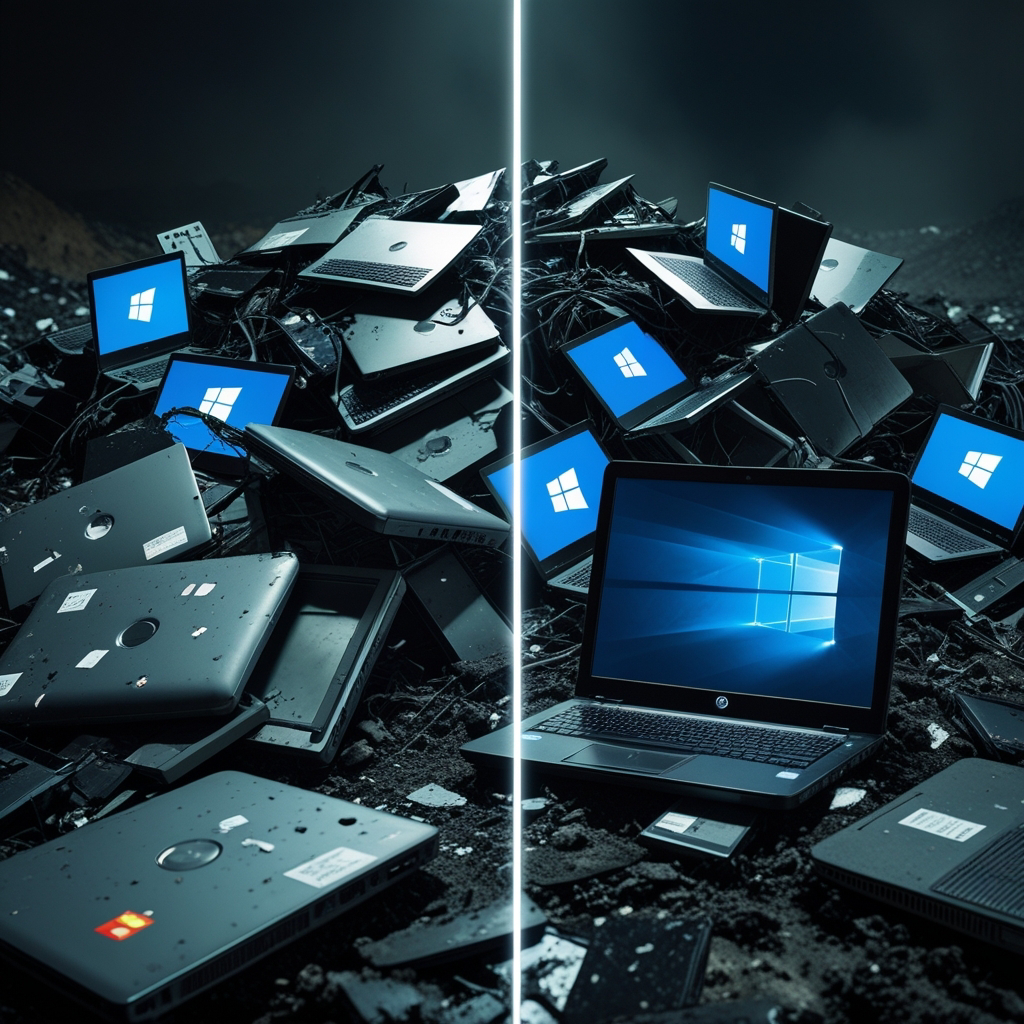Microsoft's Push To Planned Obsolescence
The Windows 10 Support Cliff: Microsoft's Push Toward Planned Obsolescence
As October 14, 2025 approaches, millions of Windows 10 users are facing a critical decision that highlights a growing problem in the tech industry: forced hardware obsolescence. When Microsoft recently began displaying end-of-support notifications on Windows 10 machines, their suggested solution revealed a troubling approach to customer loyalty and environmental responsibility.
The Reality Check: What Microsoft Actually Recommends
When the Windows 10 end-of-support popup appeared on my laptop—a machine with an Intel i5 processor, 8GB of RAM, and a 250GB SSD—Microsoft's advice was surprisingly blunt. Despite this laptop outperforming many newer machines, Microsoft's official recommendation was simple: buy a new computer.
The notification directed users to "shop for a new laptop" and "move your stuff to a new PC," treating perfectly functional hardware as disposable simply because it doesn't meet Windows 11's arbitrary requirements. This Intel 4th generation processor, while faster than many newer chips, falls outside Microsoft's compatibility guidelines, making the entire machine "junk" in their eyes.
The Arbitrary Nature of Windows 11 Requirements
The inconsistency in Microsoft's approach becomes clear when comparing devices side by side. A laptop with superior specifications, a better keyboard, and overall better performance is deemed incompatible, while a slower machine with less RAM gets the Windows 11 green light simply because it has a newer processor generation.
This arbitrary cutoff isn't about performance or capability—it's about driving hardware sales. Users can bypass these requirements and successfully run Windows 11 on older machines, proving that the limitations are artificial rather than technical.
What Users Are Actually Planning to Do
Recent polling data reveals that Windows 10 users aren't simply following Microsoft's playbook:
- **39% plan to stick with Windows 10** despite the end of support, relying on third-party antivirus updates and careful browsing habits
- **23% will upgrade to Windows 11** on compatible hardware, often customizing it to look and feel more like Windows 10
- **38% are exploring alternatives**, with many considering Linux distributions or other operating systems entirely
These numbers suggest that Microsoft's forced upgrade strategy may backfire, pushing users toward competitors rather than newer Windows machines.
The AI Marketing Disconnect
Adding insult to injury, the tech industry's current obsession with AI-powered laptops seems completely disconnected from user needs. When asked about AI features in laptops:
- **80% of respondents** simply want a functional laptop without AI marketing
- **19% are indifferent** to AI features
- **Only 2%** actually want AI capabilities in their laptop
This disconnect is particularly jarring given that most AI interactions happen through cloud-based services anyway. Why pay premium prices for on-device AI processing when the functionality primarily relies on internet connectivity?
The Environmental and Economic Impact
Microsoft's approach raises serious questions about corporate responsibility. Forcing users to discard functional hardware creates unnecessary electronic waste and financial burden, particularly problematic when:
- Many users cannot afford new laptops
- Cybersecurity threats make keeping older systems secure more critical than ever
- Climate change demands we extend hardware lifecycles, not shorten them
The company could easily provide essential security updates for Windows 10, allowing users to continue using perfectly functional machines safely. Their choice not to do so appears driven by profit motives rather than technical limitations.
Alternative Paths Forward
Faced with Microsoft's ultimatum, users have several options:
Stay with Windows 10: Continue using the system with third-party security software and careful internet habits. Windows Defender updates should continue, following the pattern set with Windows 8.1.
Upgrade to Windows 11: If your hardware is compatible or you're willing to bypass restrictions, Windows 11 can be configured to closely resemble Windows 10.
Explore Linux: Many distributions offer familiar interfaces with better hardware support for older machines, plus extended security support.
Consider Chromebooks: For users who primarily browse the internet, Chromebooks offer a cost-effective, secure alternative.
Switch to Mac: While expensive upfront, Macs typically receive longer support lifecycles, potentially offering better long-term value.
(Option 5: ReactOS, plus code any software you need via Aide.dev, Void.ai, Zed, Augment Agent, VS Codium. Also,
If VS Code is impractical, consider lightweight editors that still support 32-bit:
- Sublime Text (32-bit builds available).
- Notepad++ (optimized for lightweight coding).
- Geany or Vim/Emacs (minimal resource usage).
-
The Bigger Picture
Microsoft's handling of the Windows 10 transition represents a broader industry trend toward planned obsolescence. By artificially limiting software compatibility, tech companies force hardware upgrade cycles that benefit manufacturers while burdening consumers and the environment.
This approach is particularly tone-deaf in an era of:
- Increasing economic uncertainty
- Growing environmental consciousness
- Rising cybersecurity threats that make secure computing access essential
Looking Ahead
As October 2025 approaches, the Windows 10 support cliff will likely accelerate the diversification of desktop computing. Users frustrated with forced upgrades may finally explore alternatives they've long considered, potentially weakening Microsoft's desktop dominance.
The company's approach sends a clear message: customer loyalty and environmental responsibility take a backseat to hardware sales partnerships and upgrade revenue. Whether this strategy proves wise in the long term remains to be seen, but early signs suggest it may push more users toward Apple, Google, and open-source alternatives than Microsoft anticipates.
The question isn't whether your Windows 10 machine will stop working after October 2025—it's whether Microsoft's approach aligns with your values and financial priorities. For many users, the answer appears to be no.


Comments
Post a Comment